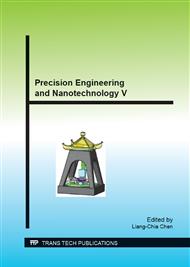p.489
p.496
p.505
p.511
p.518
p.525
p.530
p.536
p.545
Improvement on Die-Casting Efficiency and Property of Aluminum Alloy Casing.
Abstract:
Die-casting process is significantly used in the industry for its high productivity and less post-machining requirement. For high pressure die-casting, it needs well-design of gating and runner system; therefore, die cavity design and technology parameter calculations are essential. In the current paper of die-casting for automobile starter motor casing, the following issues are focused: filling simulation, defect analysis, and finally the use of the Taguchi multi-quality analysis method to find the optimal parameters and factors to increase the aluminum ADC10 die-casting quality and efficiency. When the casting speed is increased, the volume shortage detects due to solidification procedure can be reduced. However, if the casting speed exceeds a permissible level, the defects of gas volume and porosity will occur. After Taguchi method analysis, the results of the optimum parameters are: for the gate area of 40mm2, group 2 of the gate location, the speed of the liquid metal at the gate 50 m/s, the temperature of molten aluminum 670° C.
Info:
Periodical:
Pages:
518-524
Citation:
Online since:
August 2014
Authors:
Keywords:
Price:
Сopyright:
© 2015 Trans Tech Publications Ltd. All Rights Reserved
Share:
Citation:


